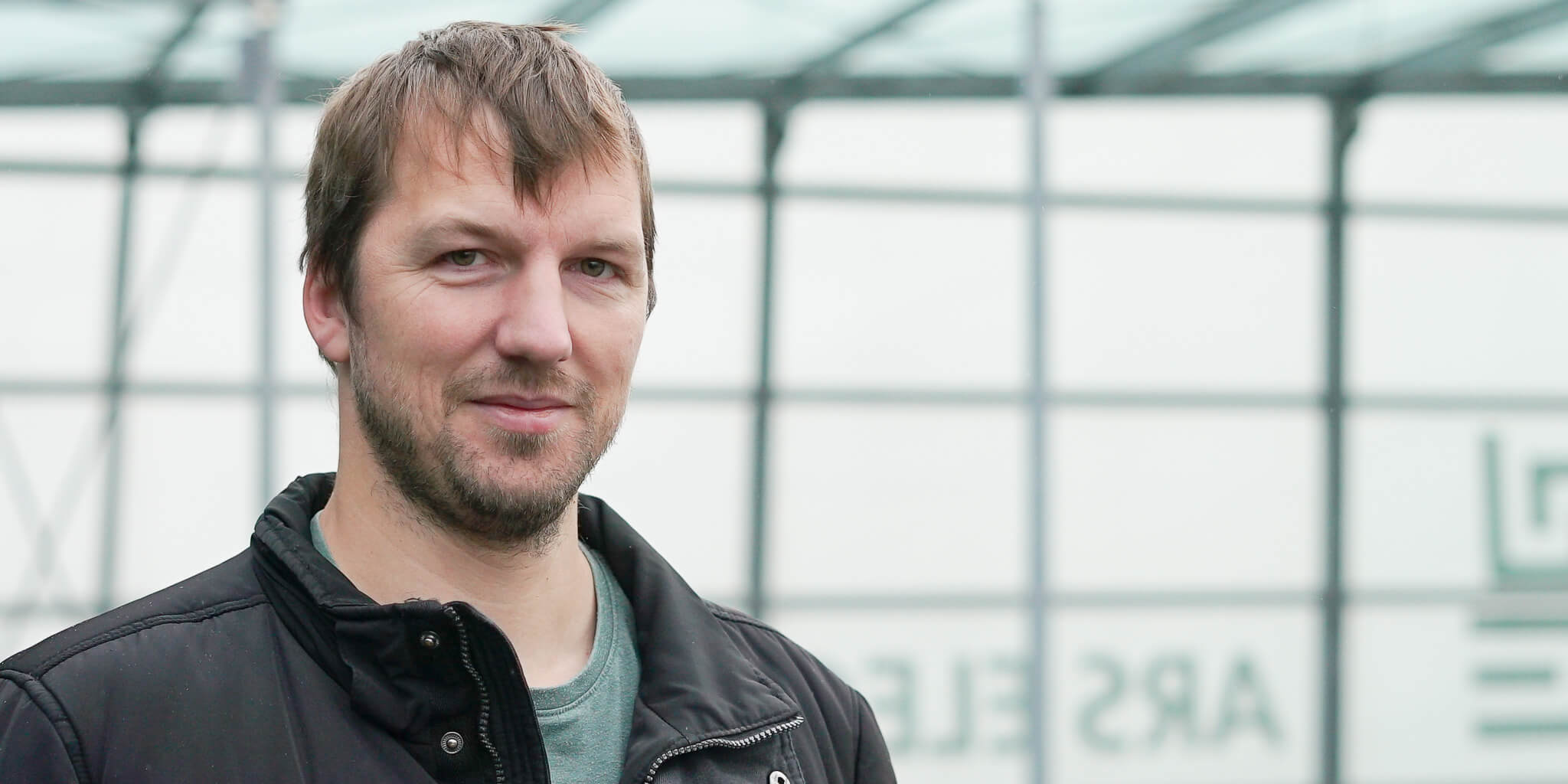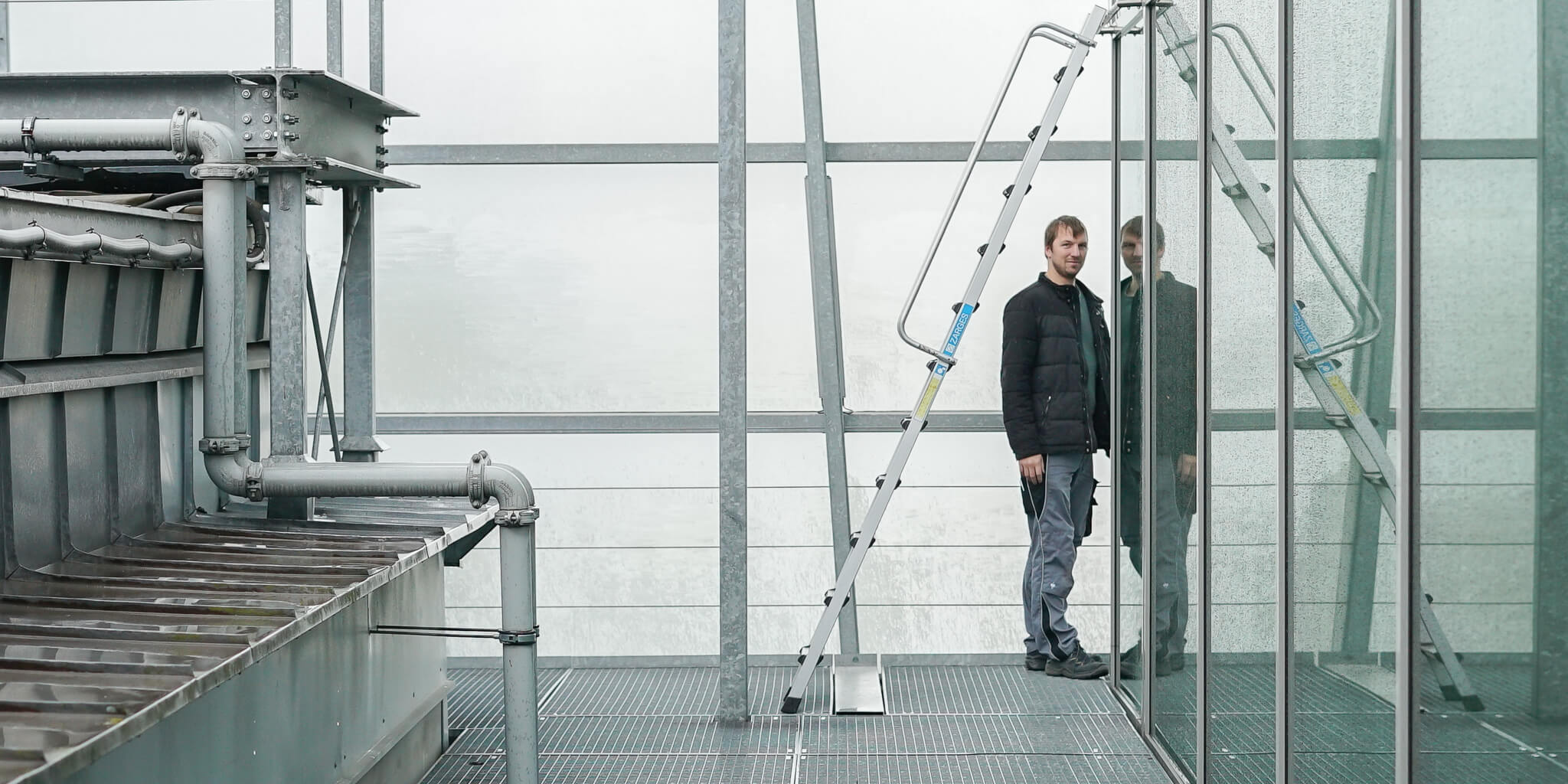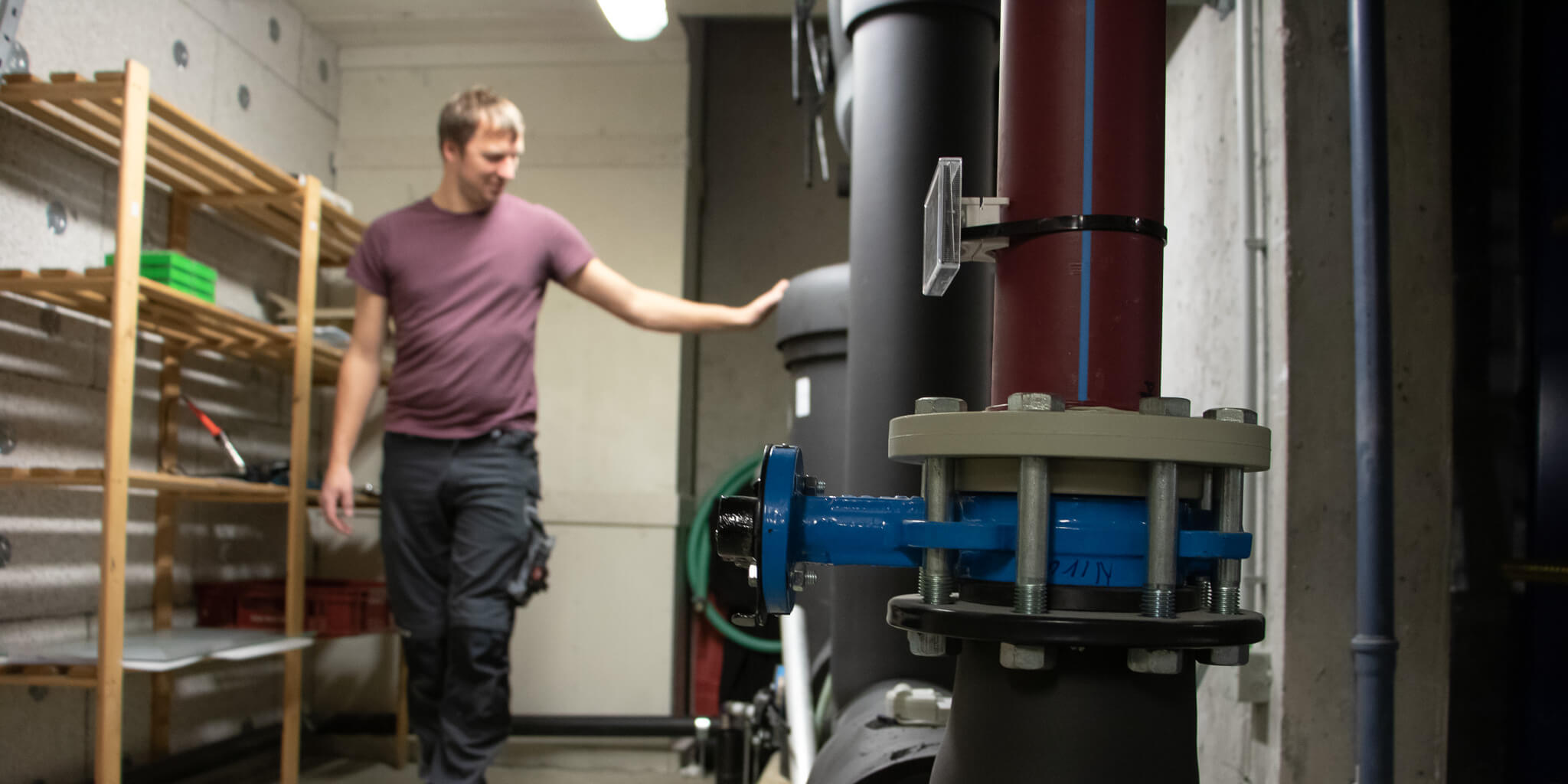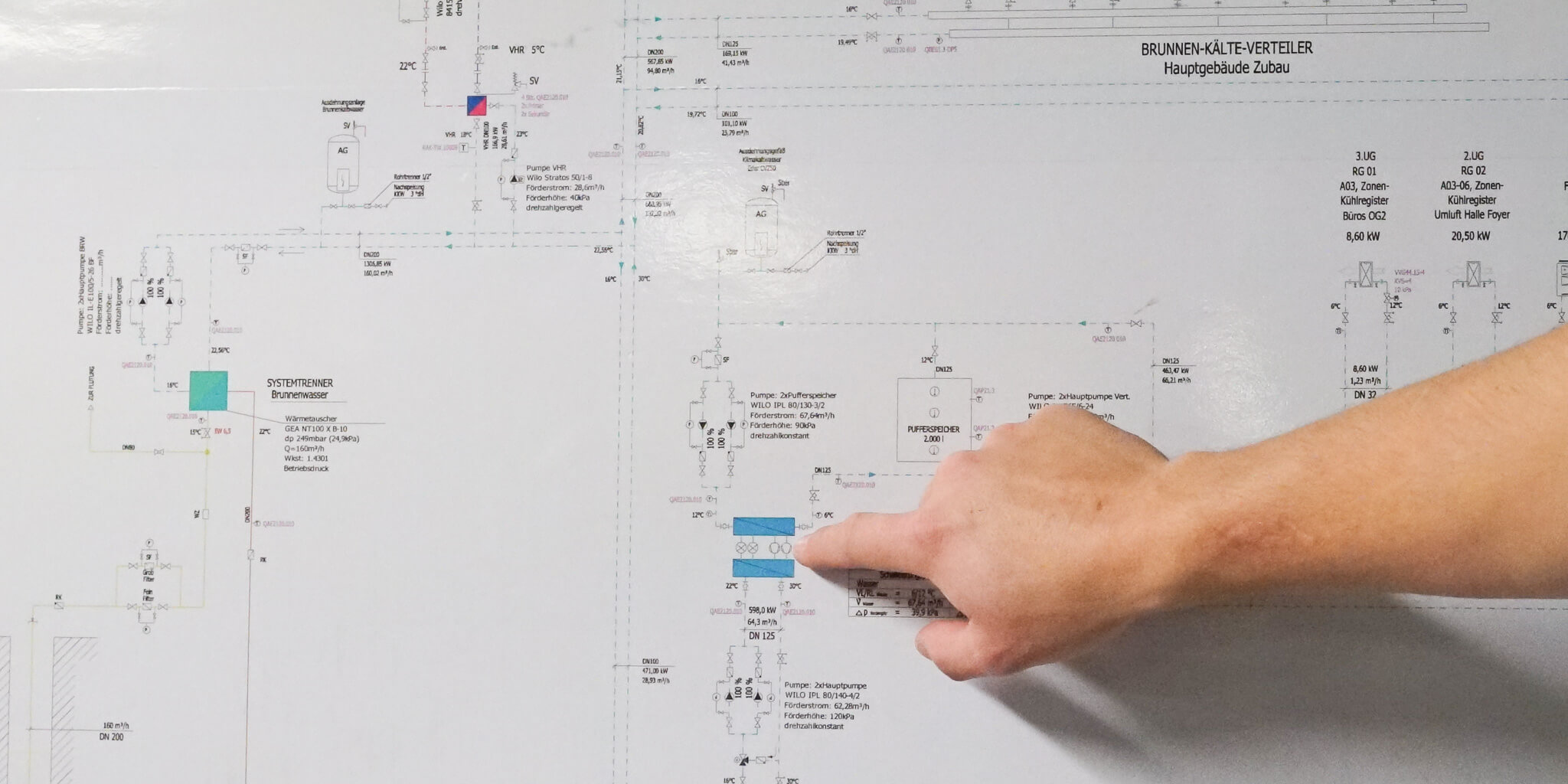Elias Silber, technician at the Ars Electronica Center, was able to reduce the museum’s electricity consumption by 35 to 40 percent.
Read more: The energy changerCitizen Science happens when science is emerging in the midst of our society. At home. Out in nature. Or at work, for example in a museum: in the spaces of the Ars Electronica Center, research is done every day. But it’s not only in the labs and exhibition halls that those great contributions are created that we all know well from our science show stages. Tucked away behind the scenes of the Future Museum, Elias Silber works in the facility tech crew. He is one of the team’s great idealists. As a self-confessed Citizen Scientist, he has been thinking about a crucial question, – not just in light of the ever-increasing cost of energy: Can’t a museum of the future be run in a much more energy-efficient way?
With his research and measures, he has made himself a name throughout the entire institution in a very short time. Since he started working at the Ars Electronica Center as an facility technician, he has been able to reduce the museum’s electricity consumption by 35 to 40 percent. We want to give him, as well as many other non-scientists, DIY scientists and amateur researchers, a stage here, and soon, – at the Ars Electronica Center with the Citizen Science Days. We talked to the electrician about his research because we wanted to know how exactly he succeeded in this future project.
Electrician, researcher and visionary
Elias Silber is a quiet guy, in T-shirt and working pants from Engelbert Strauss. His realm is hidden behind the LED facade, in the fuse boxes, between pipes and cables, in the technician’s office and sometimes even on the roof. As a trained electrician, he worked for the E-Tech company for 10 years. After that, he was a facility technician and deputy fire safety officer at the Landes Frauen- und Kinderklink in Linz for 11 years. Since 2021, he is part of the Ars Electronica team. ” The high power consumption was something I took personally,” jokes the 34-year-old from the Mühlviertel region of Austria. “So I really got into it. Actually, it wasn’t that difficult.”
“Technically, a lot is possible, of course,” he then continues to reflect, “but energy efficiency is always a company-wide learning process as well. As a building services engineer, you play a crucial role as part of the team. If you can create a technical infrastructure to use energy reasonably, that’s the best prerequisite. But if we don’t all rethink together, we won’t be able to fully exploit the potential. After all, it’s not technology as such that will solve our problem with high energy consumption. Above all, it is the awareness of the employees that contributes significantly to how energy-efficiently an institution or a company operates.
People behave differently at their workplace than they do at home: They turn on the lights and don’t think about turning them off again. Or they open the windows to have a quick breath of air and then forget to close them again. When rooms are shared by many people, often no one really feels responsible at the end of the day.
However, there is also huge potential for savings in the organizational framework: When the Ars Electronica Center is closed to visitors on Monday, for example, training sessions are held for the info trainers. Often, the entire building is put into operating mode anyway.”


The required infrastructure for energy-efficient museum management
In order to specifically identify the power guzzlers in the Ars Electronica Center, the technician purchased a device that can be used to measure and record energy consumption and power: If you know how to use this Power & Energy Logger, as well as the supplied software specifically, the acquisition price of about a thousand euros quickly amortized. “Of course, there are also more expensive devices that provide even more accurate records. These can then also measure voltage fluctuations, for example, which would break expensive machines. That, too, may make perfect sense in some companies and contribute to sustainability and economy. Especially if high-tech machines would be endangered,” says the trained electrician. But even with the cheapest option, which he uses at the Ars Electronica Center, he has obviously already been able to make quite a difference. “With this device, I was able to find out that the lights on the Main Deck were already turned on at four in the afternoon. In the engineering control center, certain pump circuits were running round the clock, which wasn’t necessary either.”
Since the Ars Electronica Center’s media façade now also goes out at 11 p.m. instead of midnight, even more energy can be saved: “Depending on the program that’s running there, about 25,000kWh of energy a year is consumed to operate the LEDs. That’s equivalent to the power consumption of about 120 standard household freezers.” But it’s not the big projects and exhibitions that play the most important role for the facility engineer: “Often in there aren’t so many possibilities. It’s the very small factors that hold a lot of potential – the passageway and security lighting, or the light in the toilet.”




Tips for saving electricity for companies
- Adjust ventilation times to opening hours
- Increase temperature spread
- Optimize lighting control
- Check standby devices
- Efficient ventilation: ventilate at regular intervals instead of tilting a window all day long
- Replace LEDs as soon as a light source is defective
- Replace pumps: use high-efficiency pumps
- Replace fluorescent tubes with LEDs
- Exchange motion detectors
Every path to the goal starts with great visions
Despite his huge achievements last year, Elias Silber does still not feel that he has reached his goals and sees potentials for savings almost everywhere. The building’s timeless architecture sometimes belies its true year of construction: built in the mid-1990s, the Ars Electronica Center is far from being up to date on many important sustainability issues. Currently, he is researching ways to implement a PV system, because the usual installation options on the roof run up against structural obstacles. Elias also wants to optimize the operation of the chiller as soon as possible: “The machine is necessary to compensate for the waste heat from the equipment, for example the projectors of Deep Space 8K, or the computers in the server rooms. It is already supplied with cold by a sophisticated system that tempers the warm air with water from the Danube to 11 to 13 degrees.” But the technician is already thinking about ways to perhaps make better use of the waste heat from the equipment. And at the Ars Electronica Center, people are already eagerly awaiting his next idea.
If you’re now in the mood for Citizen Science yourself, you’re welcome to attend the Citizen Science Days on February 18, March 18 and April 15 in the Ars Electronica Center. As a “warm-up” to the 8th Austrian Citizen Science Conference 2023 at Johannes Kepler University, the Citizen Science Days aim to arouse your curiosity about an exciting topic of the future. Learn more about our extensive program at the Ars Electronica Center. The OeAD Center for Citizen Science also invited to an online panel discussion “Forschen(d) lernen” on 12/14 to discuss practical science education for children and youth. Join in!
